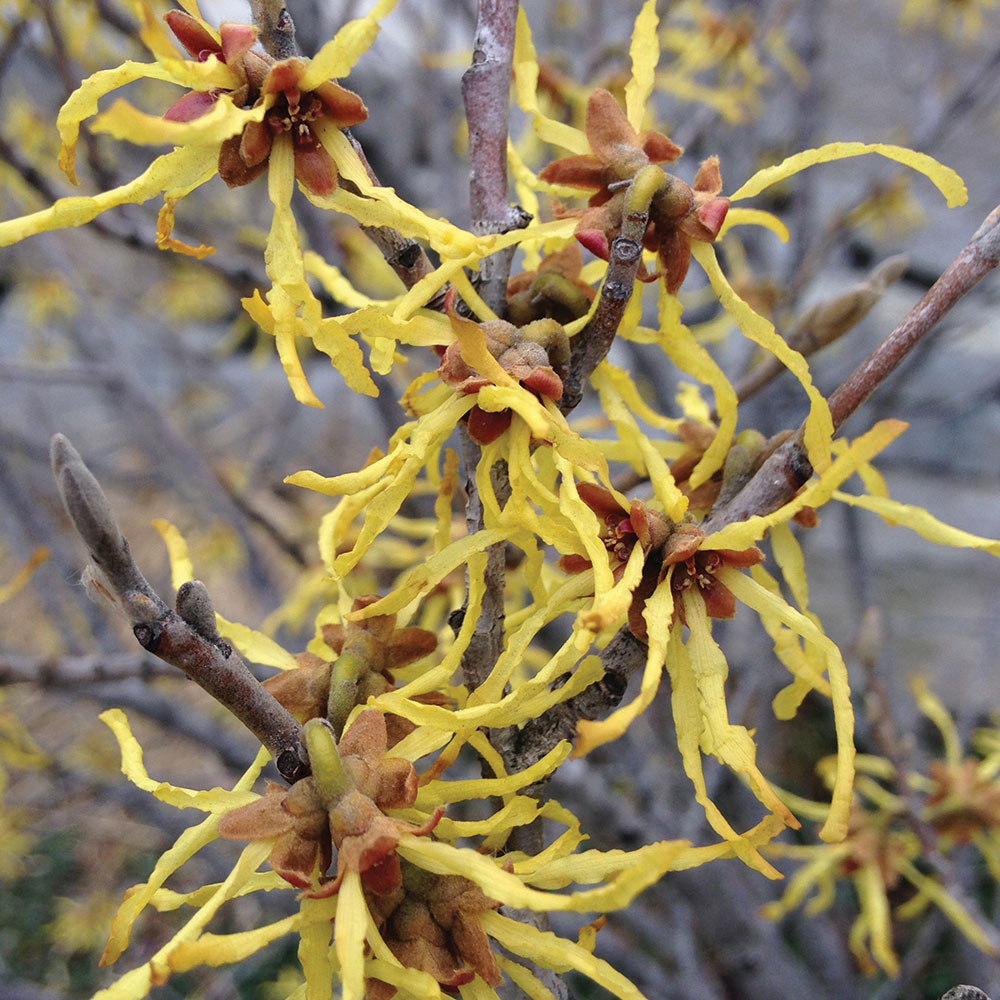Witch Hazel: In Search of Late Bloomers
The Great Outdoors | September 1, 2023

By Jackie Scharfenberg, Forest Naturalist, Wisconsin Department of Natural Resources
I was told a small tree/shrub grows in our state that blooms from late September into December.
That means it flowers after the frosts of fall through the first snows of winter. Unbelievable! I must find this incredible late bloomer, American witch-hazel (Hamamelis virginiana), to see it for myself.
Where to Look
The best places to search for witch-hazel include the forests of eastern North America from Minnesota and eastern Texas to the Atlantic and from southern Canada to the Gulf of Mexico. It grows as an understory tree/shrub preferring rich, moist soils. As witch-hazel matures, its arching branches typically form dense, vase-shaped clumps that reach 12-15 feet high, but sometimes grow to 30 feet tall.
What it Looks Like
In summer witch-hazel sports simple, broadly oval, two-and-half- to six-inch-long leaves that have uneven bases. These leaves possess large, wavy toothed edges and dark green upper surfaces and paler greed undersides. In fall they turn yellow to yellow-orange in color.
My quest to find a witch-hazel bush should prove a fairly simple task as they begin to bloom and the leaves turn color in fall and continue well after leaf drop. The bright yellow flowers come in clusters of three along the branches. Each flower consists of four ribbon-like .5-.75 inch long petals that maybe twisted, crimped, curled or a combination of these along with four yellow sepals. On cold, cloudy days, the petals curl up and then unfurl when warm sunny conditions return. The flowers are quite fragrant. If I can’t spy their bright yellow blooms, maybe I can sniff them out much like those late-season pollinators would do.
The Blossoms & Bugs
Scientists have discovered a whole menagerie of insects that benefit from witch-hazel’s late nectar-rich flowers and, in turn, pollinate them. These include fruit flies, blowflies, wasps, beetles, bees, and few species of owlet moths.
Pollination
Even though the flowers remain receptive to pollen for a long period, seed fertilization occurs in spring, five to seven months after pollination. This allows them a better chance of getting pollinated when few insects remain active, and weather is better to develop their seeds, which ripen in capsules during the summer. As the capsules harden and dry in the fall, the pressure builds on the bottom of the seeds so much so that the two shiny black seeds can be expelled up to 40 feet. What seedling wants to grow in its parent’s shadow? The presence of both flowers and ripe seed pods at the same time is another unique feature of witch-hazel. It will take another year before the seeds germinate.
With all these extraordinary characteristics, I mostly definitely will head to the fall woods to search for these fascinating late bloomers. Hope you find American witch-hazel flowering in your neck-of-the-woods this autumn.



